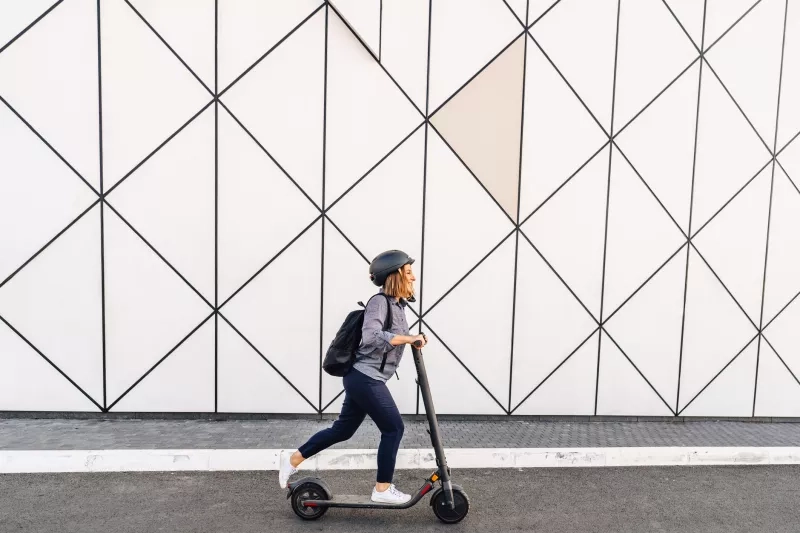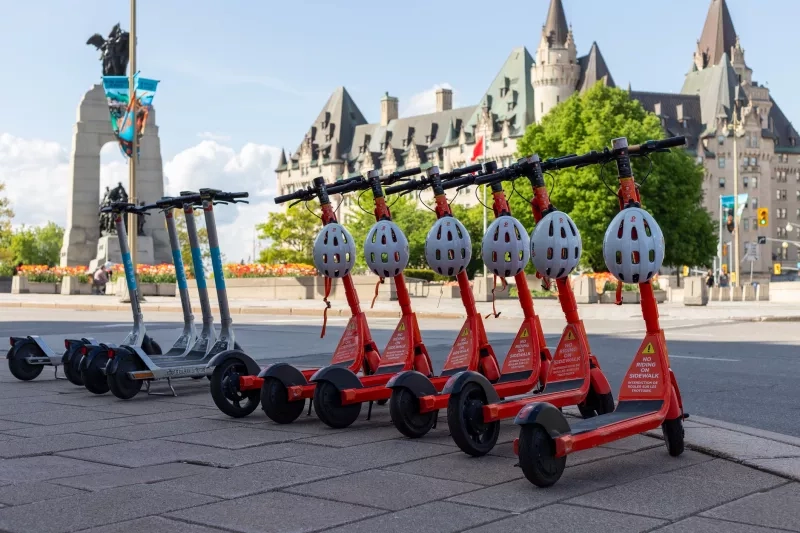
What you need to know before riding an e-scooter or e-bike in Ottawa
3 Minute Read
In the modern urban landscape, there is no lack of transportation options. Be it an automobile, bicycle, bus, train, or simply walking - there is something for everyone to get you from place A to place B. That said, there's no option quite as fun as an e-scooter or e-bike.
Blending the best of cycling, driving and eco-conscious travel, micromobility vehicles like e-scooters and e-bikes offer a unique way to commute. You get where you need to go, feel the breeze on your face, and maybe even break a light sweat - all while reducing your carbon footprint.
However, the ride does come with risks. A recent CAA-commissioned study found that while micromobility services are expanding across Canada, accidents are also on the rise. The benefits are clear, but so are the hazards.
Key facts about micromobility safety
In partnership with the Traffic Injury Research Foundation (TIRF), CAA recently commissioned a study on Canada's safety, regulation, and use of micromobility devices.
E-scooters and e-bikes are becoming increasingly common, with rental systems available in 41 cities nationwide. However, with their rise in popularity comes a risk of injury, even for the most seasoned riders.
Between 2011 and 2022, there were 387 e-bike–related injury cases in Canada, with a notable increase year-over-year. Another cited study on e-scooters found that 2.5 per cent of all riders reported being involved in an injury-causing collision.
In the Americas, risky behaviour was also found to be widespread, with 26 per cent of riders admitting to not wearing a helmet, 17 per cent reporting riding under the influence of alcohol, and 21 per cent confessing to violating traffic laws and running red lights.
Higher popularity means higher rates of injury, but true catastrophe can still be avoided by learning local regulations and taking enough safety precautions to ensure that your fun ride on a scooter doesn't become more serious.
Knowing the rules

Before hopping on an e-bike or e-scooter, it’s important to know the rules of the road. Micromobility devices are booming in popularity, and while there are no nationwide regulations in Canada, most provincial and municipal governments have introduced their own rules to meet this growing trend.
While the laws can vary widely from location to location, there is generally always a mandate for brakes and lights on the vehicle and the use of helmets for riders under a certain age. Operating a micromobility device requires no licensing, but you should still be careful and only operate one if you're confident.
Locally, in Ottawa, regulations are relatively straightforward. E-bikes and e-scooters must be equipped with lights and brakes and are capped at a maximum speed of 32 km/h. If you're hoping to rent one from one of the many outlets across the city, you must be at least 16 years old, or 18 if you're not wearing a helmet. That said, just because you're legally allowed to go without a helmet doesn't mean you should. A good helmet remains one of the most important and effective pieces of protective equipment and can go a long way in preventing serious injury and even death. For renters, devices must also be parked in designated drop-off zones when your trip is complete.
Riders, whether renting or owning, are welcome on most roads and all bike paths but are strictly forbidden from riding on sidewalks, which are reserved for pedestrians. Although it is not enforced to upgrade your safety when driving on familiar roads at night, it is a great idea to come with some form of light reflective gear or additional lighting.
For those venturing to other major metropolises, brushing up on local laws may be wise before renting out a device. In Toronto, anything moving faster than 24 km/h is considered a motorcycle and is subject to stricter regulations. In Montreal, a helmet is mandatory, regardless of age.
That said, while it is always important to mind the rules of the roads you ride, safe practice doesn’t stop at the end of a law book, and ensuring your safety should remain priority number one. Before you ride, check your brakes, tires, and lights. Wear a helmet, dress to be visible, and ride sober without distractions. While riding, start slow, stay alert, and ride in a single file. As with any vehicle, keep your eyes on traffic, keep a lookout for pedestrians, and follow the road rules.
Fun doesn't need to be dangerous, and some small safety precautions can go a long way in keeping your head on straight. Grab a helmet, mind the cars and enjoy the ride.

